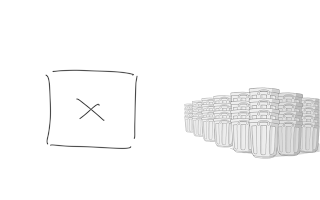Frame to Frame
Quite often in cartoons you get the same frame repeated multiple times, and you'll see the character has moved to provide some degree of interest. But look more closely, the pros will vary more than that, redrawing the frame or changing other things about the background.But in the digital world is way to easy too add some variation by zooming in.
 |
| Add variation by zooming |
Working On The Dialogue
Unfortunately sometimes you can have a nice idea but the dialogue can let it down. Here's my first example with its simple idea of the LGM with the phone setting alarm multiple times in the night to annoy the other. |
| Version 1 - Dialogue needs some work |
Here's the re-worked version..
 |
| The Final Version - Phon-etiquettes |
The drawing difference is subtle, the main change is the way that the LGM with the phone tries to hide the real reason why he keeps setting the alarm.
The finished cartoon here -> http://area5-1.webcomic.ws/comics/64/












